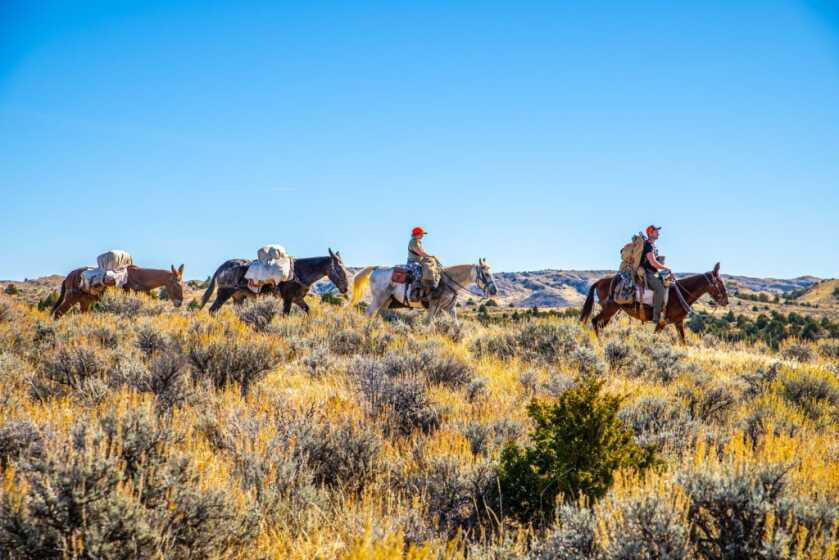
Many backcountry hunters are looking for improved access and opportunity to reach remote locations, which desire has led many people to consider purchasing or to have purchased a mule. It is difficult to argue the wit, surefootedness, and outstanding personalities of mules that make them a great choice as backcountry companions. Mules are worth their weight in gold on steep or rough terrain while being exceptionally social and loving animals. As a lifelong mule owner, I wanted to share a few experiences that I have had over my forty years of owning mules that may help you better understand and enjoy owning a mule.
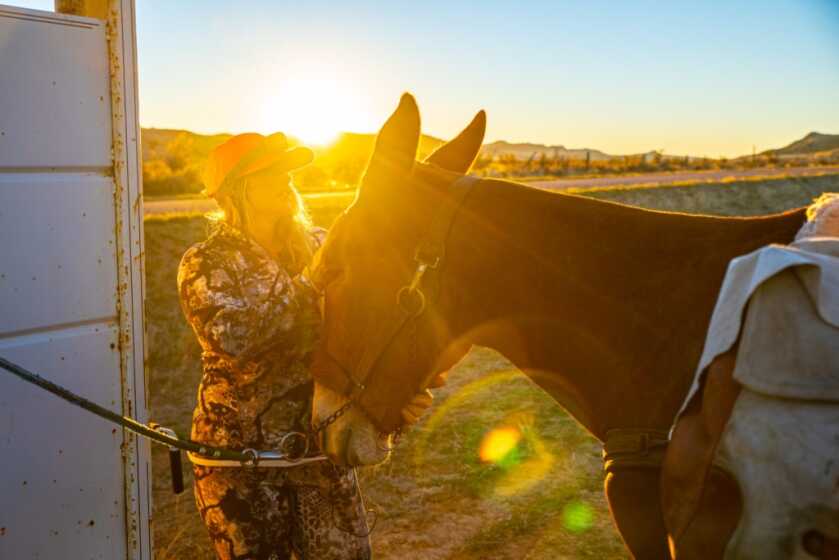
Relationship Is Everything
We have all heard stories about how bad mules can be, and contrarily how wonderful mules can be. Because mules are part donkey and part horse it makes handling and training them very different from either. Understanding mules and mule behavior is critical to building a happy loving relationship with your mule.
Mules test each person to see where boundaries exist. They remind me of a young kid that tests their parents to see what they can get away with. As we all know, kids quickly learn what mom and dad will each allow or not allow and they use that to their advantage. Mules are often the same in regard to their work ethic and behavior. Just because a mule eagerly accomplishes tasks that one person asks of them does not mean that they will do those same tasks for someone else. This holds especially true if they are treated unfairly, unkind, or are owned or handled by someone that they simply do not like. Mules tend to evaluate each person on an individual basis which makes your relationship with your mule very personal.
For this reason alone, it is quite important that the owner of a mule should train or participate actively in the training of their mule. Having a quality relationship with a mule means investing plenty of patience and time to build a relationship.
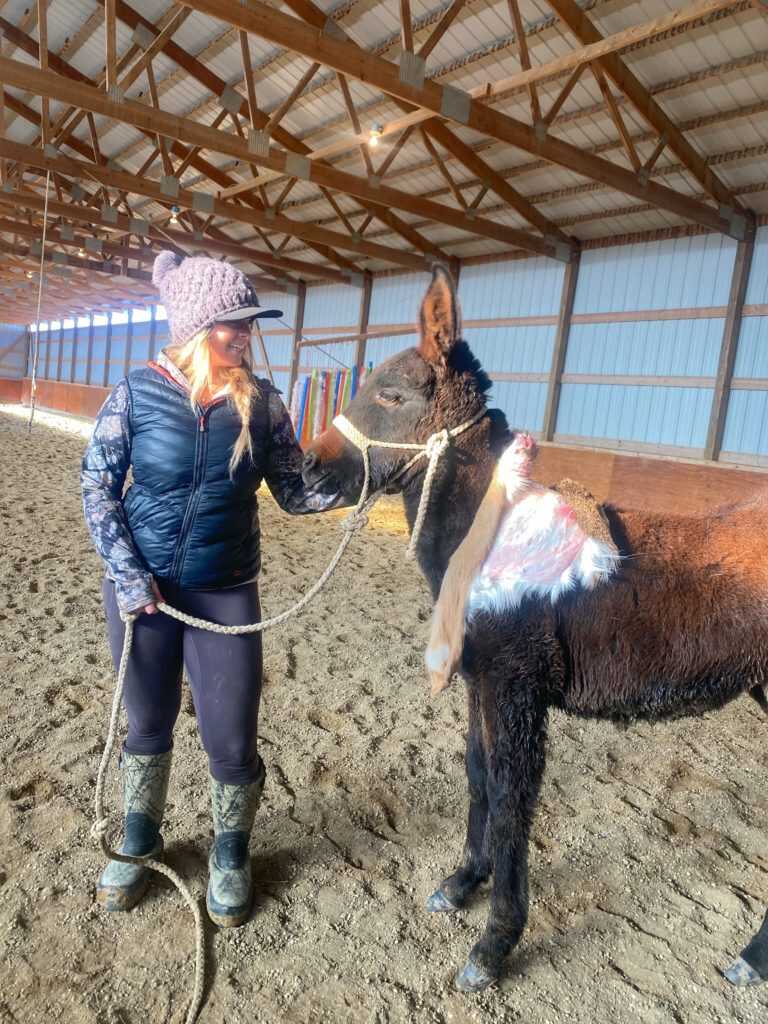
Imprint Training
Imprint training is extremely effective and, in my opinion, one of the most valuable investments that can be made to develop a well-rounded mule. The imprint period occurs right after birth and the months following birth. Training during this time period will help to build the character of your mule and how they respond to both their environment and of course to humans.
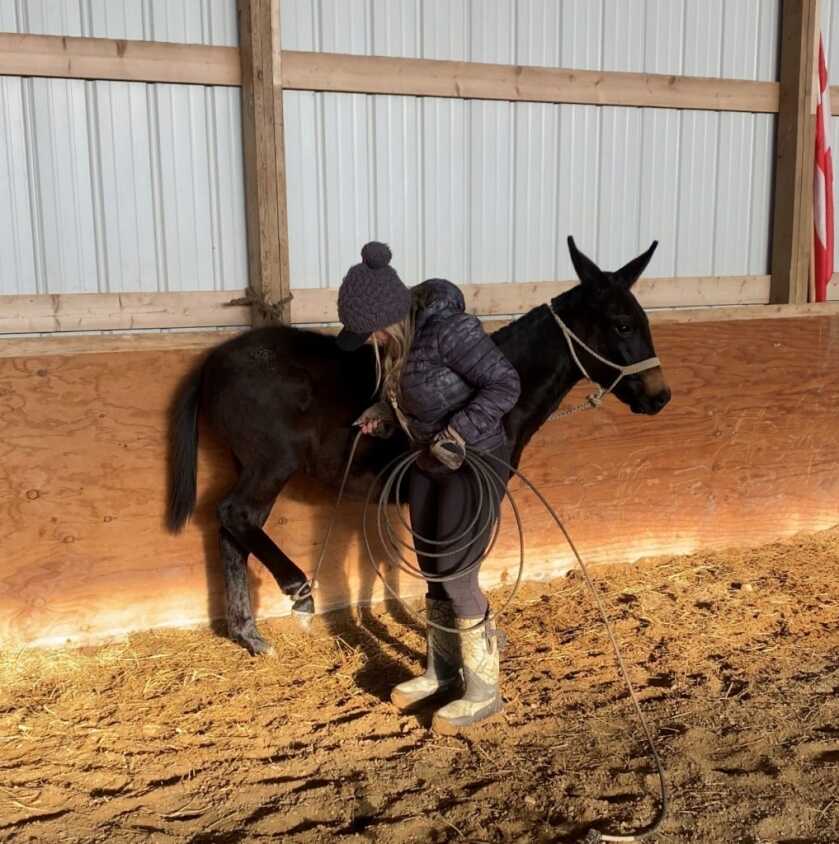
The focus of imprint training should be to prepare the mule for what they will likely experience or be asked to do as adults. This means building a foundation on simple things like getting them accustomed to picking up and having their feet handled, touching their ears inside and out, placing a finger in their mouth, getting clipped and simply showing them how enjoyable their time is with you.

Building upon the basics of imprint training, you can place soft tarps on their body, have them walk across those same tarps, walk over poles, play with a large, soft ball, basically anything that you can think of that would safely desensitize the mule to various environmental stressors. I have even taken a freshly harvested deer hide and rubbed it all over my baby mules to acquaint them with the smell of blood and raw meat as they will experience both when packing in the future. The time that you spend with your mule when they are babies and weanlings, will help build the relationship and behavior habits that they will maintain for life.
The acquisition of a weanling mule is not for everyone as they require an extensive commitment in time and training before they are ready to go to work. Mules mature much more slowly than horses and because of that, the riding or packing of mules with weight is discouraged until they are at least three years old.
The good thing is that you can apply the principles of imprint training to mules of any age and it is a great way to develop your relationship with your mule. The goal is to stimulate the five senses: sight, smell, touch, hearing, and taste. This type of groundwork and training with your mule will teach them to have confidence in you as their handler and better prepare them for their respective job.
There are many books and articles on imprint training that will help mule owners in all phases and ages of a mule’s life.
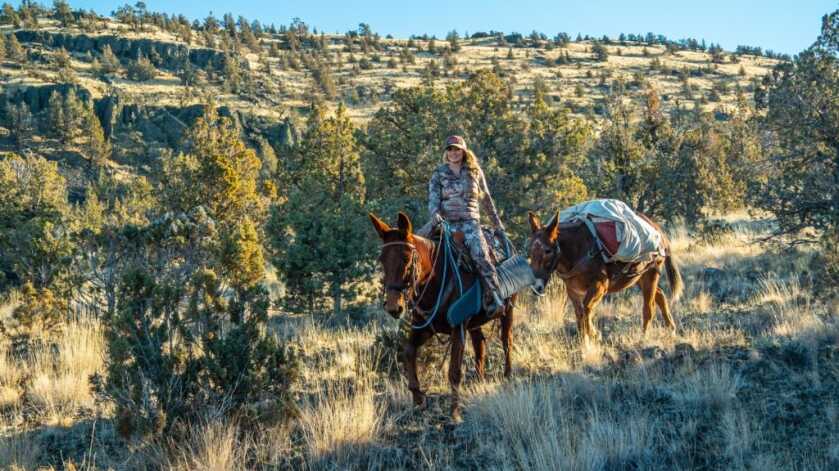
Make Bad Behavior Difficult & Good Behavior Enjoyable
With mules, it is important to make what is wrong difficult and what is requested easy and enjoyable. Focusing on making good behavior a pleasurable experience will encourage your mule to willingly follow through with what you are asking.
We have a mule named Ruby that we purchased as an 8-year-old. Ruby did not like being caught or touched despite being fantastic under saddle and very reliable in the backcountry. She was extremely cautious, and I would have described her as fearful of people. Ruby simply tolerated our existence out of necessity, did her job, and afterward, she wanted as far away from us as she could get.
She is not a mule that was easily understood, and it is clear to see how an inexperienced owner could have exacerbated her fear and possibly had bad experiences with her. This may ultimately be why she was moved around in many homes before we discovered her. Understanding the unique personality traits of each mule and continually working with them to be confident and successful will equate to a happy relationship.
When we first brought Ruby home, we kept her in a fairly small enclosure because when I would try to catch her, she would run away and avoid contact with me. It is important with mules to not get upset by their behavior and to take it for what it is. This is a situation that you can control and make the mule’s avoidance behavior difficult and unpleasant. When Ruby would either, walk, run, or even turn away from me, I would drive her to run. When she would stop running, I would approach to touch or catch her and if she moved away, I drove her to run again. Eventually, she learned that it was easier to face me, and get petted or caught. The duration of her avoidance decreased each time I caught her.

After she was caught, I would simply tie her up, and feed her grain while I brushed and handled her. Trust me, it was clear that she did not enjoy this time and for about a year she would allow me to catch her simply out of respect and more importantly her love of grain. The value of patience with a mule cannot be understated as it took time to convince Ruby that being with me was enjoyable. Fast forward to two years later, she now comes running when I call for her and willingly seeks out attention.
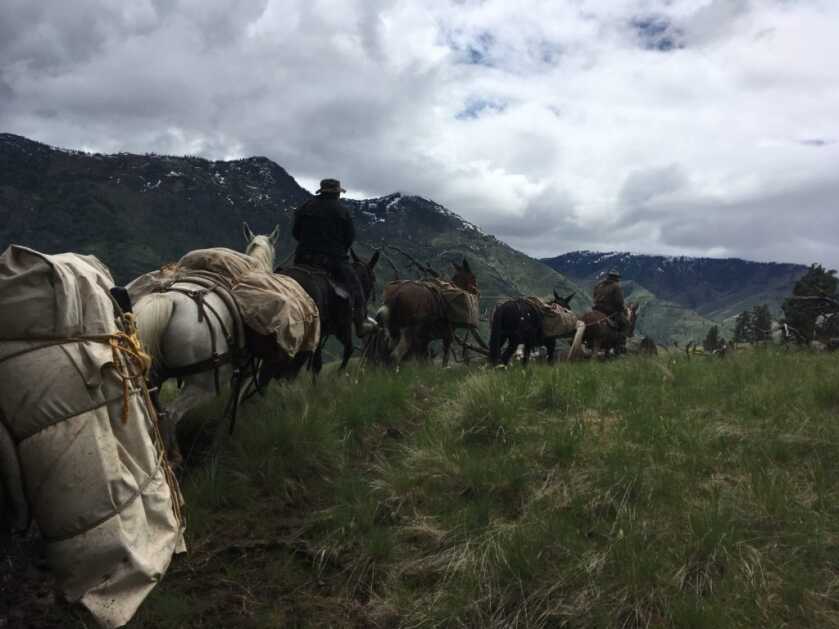
Stubborn As A Mule
Mules are often thought of as being stubborn when in reality, they are proven to be more intelligent than both the horse and donkey. They have a strong sense of self-preservation and will adamantly refuse to do anything that they deem dangerous to their well-being or that does not appeal to their own common sense. With a mule, you must convince them that what you are asking them to do is indeed something that they want to do.
Mules do not do well with punitive action as they never forget harsh treatment. With that being said, it does not mean that they cannot be fairly reprimanded so long as they understand the situation and are promptly rewarded when they do the correct action. Focusing on small achievements in the beginning stages of training is critical, praise for doing the right thing will help minimize avoidance behaviors, even if it is only a single step in the right direction.
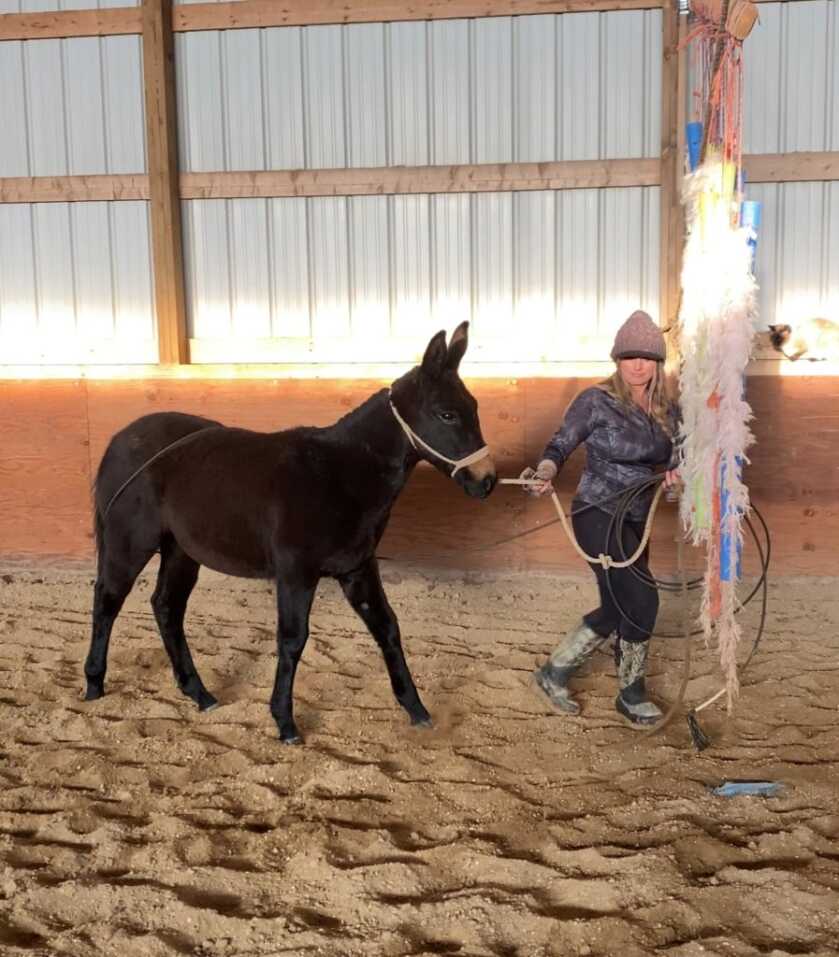
Mules are as individual as humans. Some mules are responsive in a manner that resembles a horse while others will naturally have or develop avoidance behaviors similar to a donkey. For example, my two baby mules Lexi and Lynx are polar opposites in their personalities. Lexi is very horse-like in her response and quickly and easily moves away from pressure with aids. On our first lesson in the round pen, Lexi willingly moved out at a walk and I was able to direct her in the beginning stages of teaching the verbal commands “walk” and “whoa”.
Lynx, on the other hand, was more donkey-like in behavior and our first lesson ended with me accepting and celebrating a couple of small steps from Lynx in the round pen. On the bright side, when I returned the following day for another lesson with Lynx, she willingly walked an entire circle around the pen. With that success, I celebrated her accomplishment and called it quits moving directly into petting and grain.
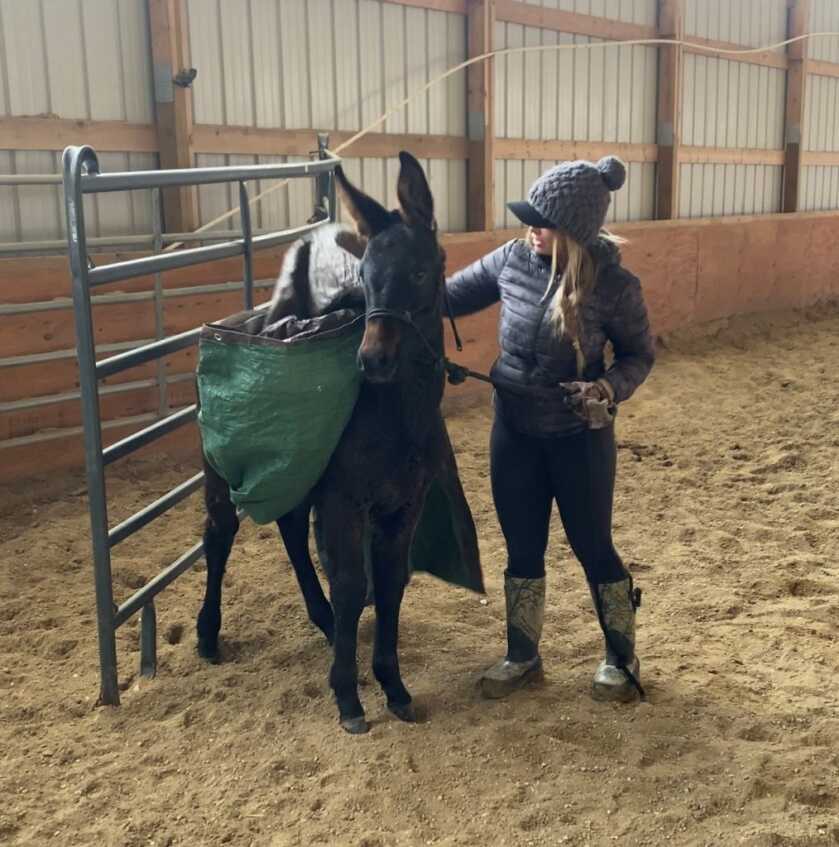
It is important to keep your lessons short, fun, and ending on a positive note, especially when you are working with a mule that is more akin to the personality of Lynx. We celebrate small successes knowing that with patience and additional time, she will be completing the same tasks as Lexi.
It is also important that as you observe your mule and what they may be averse to doing, you do not ask them to do something that you are not in a position to follow through with them completing. In the case of little time or lack of training aids, it is best to avoid the situation until you are prepared to address the situation with patience, time, and the correct training aids if needed.

Conclusion
Taking the time to learn more about both donkey and horse characteristics will help you better understand mules. It is my ultimate hope that you have the opportunity to explore the backcountry with the ultimate option in four-wheel drive and companionship. Mules are incredible animals that can truly be one of the greatest of joys in your life. Please follow along on all of my mule training and backcountry explorations on my Facebook and Instagram @KristyTitus or my Pursue The Wild YouTube Channel.
*** Buy and Sell on GunsAmerica! ***


My older Brother had a pair of saddle Mules, and I liked them FAR more than the horses.
They were inseparable, and acted more like children than animals in many respects, including sticking their heads through the window to enjoy TV time with us.
Trail wise, they were better than several horses I rode while hunting, especially one 17 hand stud who has always a handful. And they didn’t need staking, they stuck around the camp instead of wandering off.
He imprinted the pair at birth, and was always a part of their lives.
I learned to Love mules, tolerate horses.
A mule skinner of my acquaintance, upon my telling him I’d like to get a mule, said, “You can have a mule for twenty years. He will spend every day of that twenty years thinking of how he can kick your brains out.”
That’s a prime example of someone with no respect for the animal. They only act that way if treated poorly. Period.
Every bit of what Kristy wrote is true. Ours are more intelligent than our horses, at least that’s how they behave. We let one of ours roam the back yard as protection from coyotes. She does an admirable job.